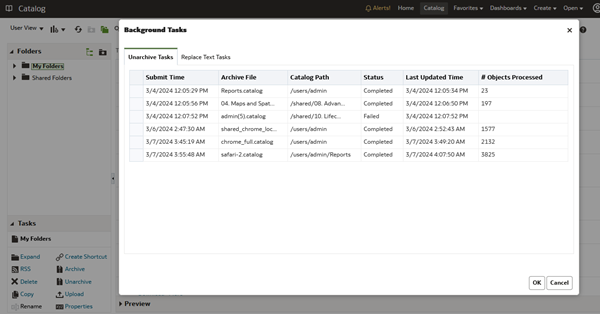Migrate Content to Other Catalogs
You can copy
catalog content from one environment to another using the catalog archive and unarchive
options. Archiving saves your content to a .catalog file on your local file
system. Unarchiving uploads content from catalog files to another catalog
location.
Save Content to a Catalog Archive
You can copy or move content you create in one environment to another
environment using the catalog archive/unarchive feature. Archiving saves one or more
objects or folders that contain multiple objects to a .catalog
file on your local file system.
.catalog file at a different location.
Upload Content from a Catalog Archive
You can upload content from Oracle Analytics and Oracle BI Enterprise
Edition 11.1.1.9.0 or later. Select the custom catalog folder where you want the content
to go, and , if you have BI Consumer permissions, you'll see an
Unarchive option. Point to a catalog archive, any
valid .catalog file, to copy its content to this folder.
Track the Progress of Your Catalog Unarchive Tasks
You can track the progress and current status of any catalog unarchive operations that you initiate from the Unarchive Tasks tab.
